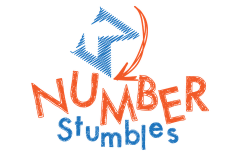Variety of Feedback, Data (to/from/about Learners; to whom?)
Variety of Feedback: Most online quiz-like resources require learners to respond individually to a series of questions. These systems vary in how, how often, and how quickly they provide feedback to the learner and to those who may be guiding or teaching the learner. These systems also vary in the characteristics of feedback: e.g., immediate, delayed, neutral, prescriptive, judgmental, critical, amusing, private, public, visual, auditory, fleeting, permanent, …Feedback may also vary for different topics, difficulty levels, or other features.
Use, Role of Data: The feedback provided by the system may be determined by how it collects, analyzes, saves, and secures data created by each learner’s activities (and, perhaps, for data created by groups of learners).
Mindsets, Error Rates, Learning Capacity
Dweck and others have suggested that the learner’s “mindset” with respect to making errors and receiving feedback can have great impact on how learners respond to various kinds of instructional activities. People can improve their learning capacity by attaining a “growth mindset,” and overcoming a “fixed mindset”.
Growth Mindset: Respond to errors and difficulties with some enthusiasm. They embrace new learning opportunities and other difficult challenges. They expect to succeed.
Fixed Mindset: Give up quickly when they make a few errors.They try to avoid new learning opportunities and other difficult challenges. They expect to fail.
3 Paradigms for Error Rate in Learning (& AEFL)
Old Paradigm: (Lower) Error Rate in Learning is an ATTAINABLE GOAL for QUALITY of LEARNING, but it is slow to achieve
Error rate when learning is an important DEPENDENT variable. All(?) learners prefer to lower their error rates and increase other indicators of success for new learning activities. They can do so in advance by improving attitudes and specific study skills, and by acquiring relevant background knowledge. Teachers, tutors, and others can help.
Older Paradigm: Error Rate in Learning is a MEASURE of CURRENT QUALITY of LEARNING
Learners’ preferences for error rates are irrelevant.
New Paradigm? Error Rate in Learning is a TOOL for DYNAMIC IMPROVEMENT of QUALITY of LEARNING
Learning activities can be designed to support control of error rates by learners and teachers. Learning can be improved by adjusting conditions that influence a learner’s error rates. Learners’ preferences for error rates and responses to error rates may change.
Direct Control of Error Rate in Learning: Parameters that can be set and adjusted intentionally by the learners and teachers.
Indirect Control of Error Rate in Learning: Parameters that can be modified dynamically by the learning system in response to data collected about the learner’s activities.
(Online Video) GAME EXPERIENCE
- Demonstrates how different people want/need/prefer different levels of challenge/ease
- Do these preferences change? When, why, how,…?
- Do some people want/need/prefer to feel they are ACHIEVING DIFFERENT ERROR LEVELS as they proceed, make progress?
- Systems must be designed to alter “difficulty” of tasks?Even if only to stabilize the player’s perception of difficulty as progresses? Also if player’s preferences/needs for challenge/error rate change? When, why, how, …?
dsgdsgwaWAGWR
